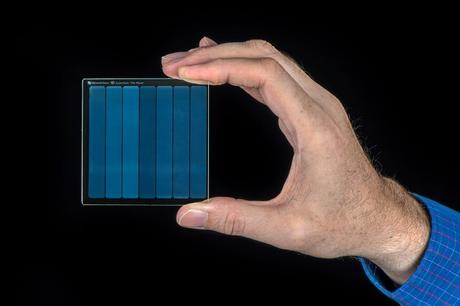
Microsoft's Project Silica is a new long-term storage technology. As proof of concept for the same, the Redmond-based firm partnered with Warner Bros. to successfully save and retrieve the 1978 superhero movie Superman on a slide of silica glass. This breakthrough in storage technology will increase the shelf life of the stored data due to increased durability to withstand wear-and-tear when compared to the traditional magnetic drives or storage films.
Project Silica specifications
At 75×75 mm, the quartz silica glass is nearly the size of a drink coaster. It is just 2 mm thick. The storage capacity is around 75 GB.
How does it work?
Short pluses of light via femtosecond lasers are used to write the data to the glass. The data is encoded in voxels - 3D versions of pixels. Each voxel is shaped like an inverted teardrop. Voxels of various sizes placed at different angles results in the storage of data. A 2 mm thick glass slide can store more than 100 layers of such voxels.
In order to read back the stored voxels, a computer-controlled microscope is used, which examines the glass slide with a beam of laser. The laser light reflects at different colors (depending on the angles at which the voxels are encountered) and different strengths (for various sizes of the voxels). The reflected light is then captured by a camera. The above information along with the layer number is then analyzed using machine learning algorithms to decode the stored data.
Project Silica durability tests
Even though the slide is made up of glass which is known for its fragile nature, the team at Microsoft conducted several tests to prove otherwise. The glass slide was exposed to cold and boiling water, microwaves, demagnetization, and baking at 260 degree Celsius. The data was successfully read back after each instance.
Project Silica benefits
- Less susceptible to disasters like earthquakes, fires, floods, magnetic interference, or power outages
- Less energy consumption when compared to modern day data centers
- Occupy less physical space
- Built to last for more than a thousand years (magnetic storage devices last around 10 years only)
- Faster retrieval of data when compared to traditional cassette tapes

Ankit writes code for a living. He reviews gadgets and books in his free time, and believes in the magical power of a strong cup of coffee.
